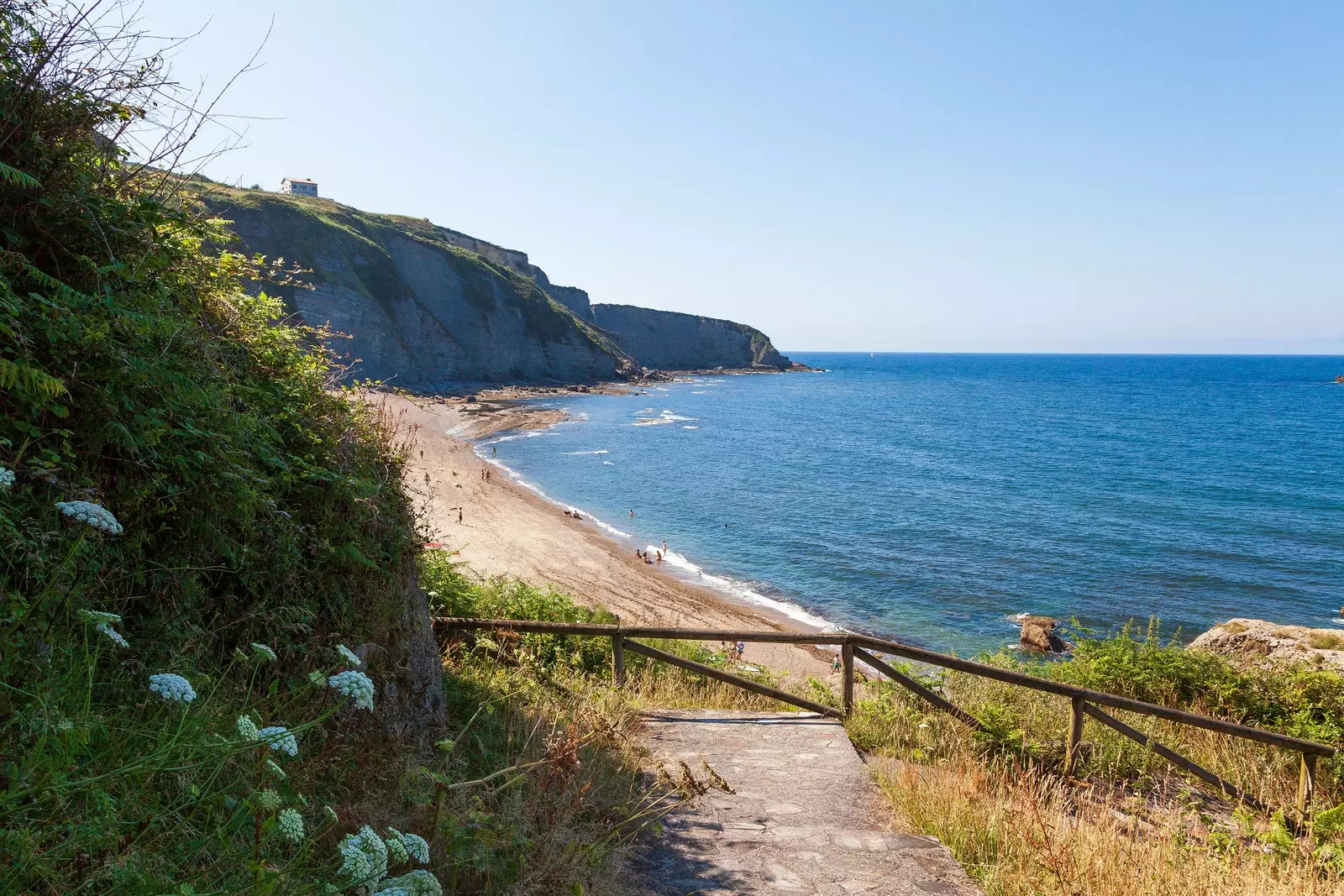
Serin beach, in Gijon
We leave aside the popular letronas, the convoluted streets of Cimavilla and the always exultant San Lorenzo beach . We forget for the moment the Roman baths of Campo Valdes , of the Don Pelayo statue and even the wonderful In Praise of the Horizon . And we do it with a most suggestive purpose: we are going to Gijon , Yes, but willing to discover its other face.
And by "his other face" we mean the more natural environment , the one that surrounds the lively Asturian city and in which its inhabitants are in full communion with the rural world. After all, it is that universe of meadows, quintanas and mountains, of carbayeras, coves and cliffs , which makes up 80% of the territory of the Gijón council.
Let it not be said that its twenty-five parishes — twenty six , with Gijón itself— are not overflowing with reasons to dedicate a getaway to it.
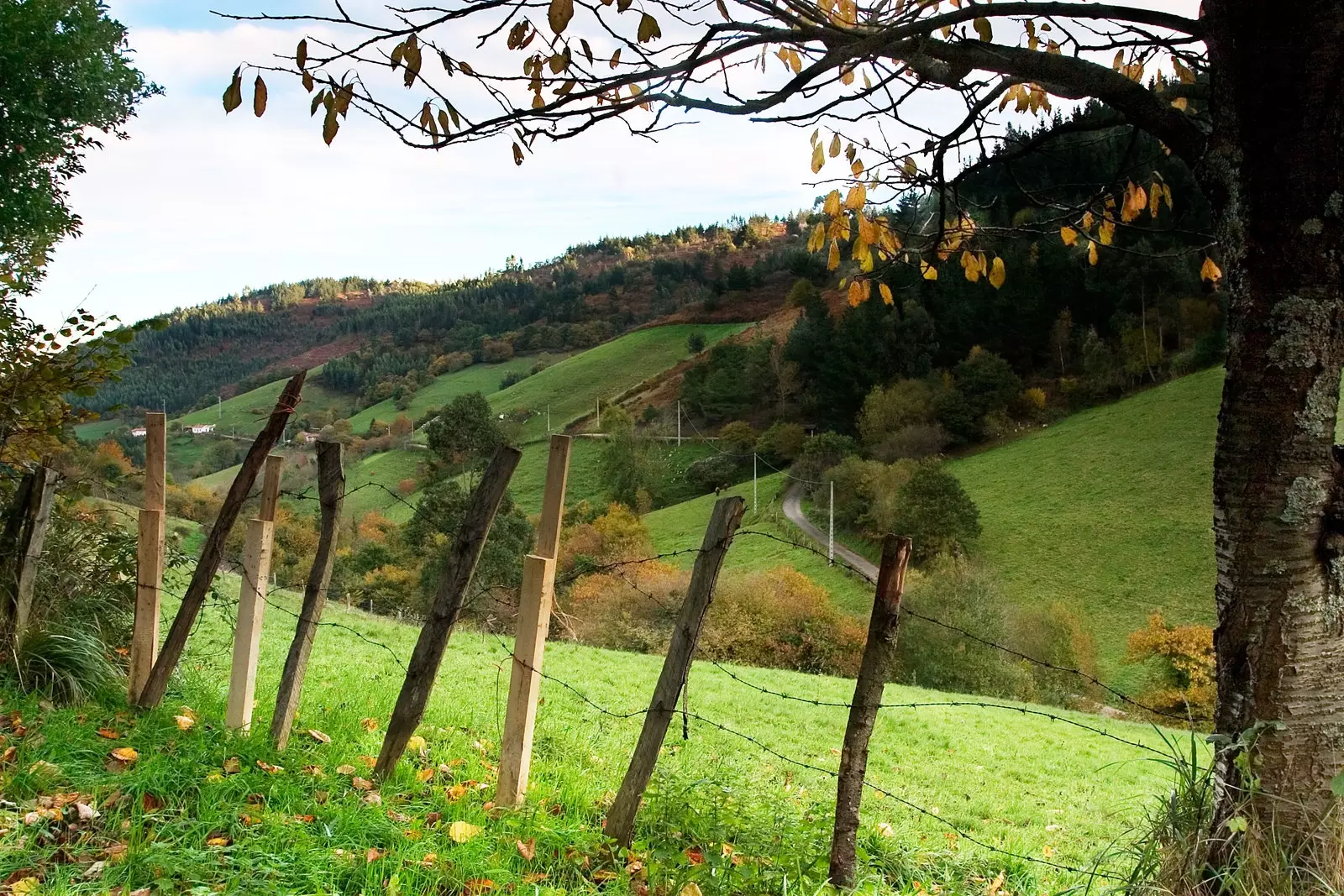
Valle de Rioseco, the lung of Gijón
HIKING AS A WAY OF EXPLORATION
We lace up our boots very tightly and we are going to walk some of the most beautiful trails in Gijón: five are the main routes that run through its territory and that give, each in its own way, that type of experience that marks a trip forever.
Starting with the Cervigon Path , accessible directly from the city itself: 9 kilometers that invite you to climb slopes and look out over cliffs at the edge of the Cantabrian giving away impossible prints and, better yet, with a set of the most iconic sculptures.
there they remain the lloca with his gaze lost in the sea, the twisted forms of Solidarity, work of Pepe Noja , or the Halls Castle , out of the wit of Joaquín Rubio Camín as a tribute to the bulk carrier that ran aground off the coast in 1986 . There are also the El Rinconin beach —accessible for dogs—, the Rosario Acuna's house , writer and journalist—in addition to great feminist icon -, or the Cabo de San Lorenzo Park , one of the most acclaimed natural viewpoints in the council.
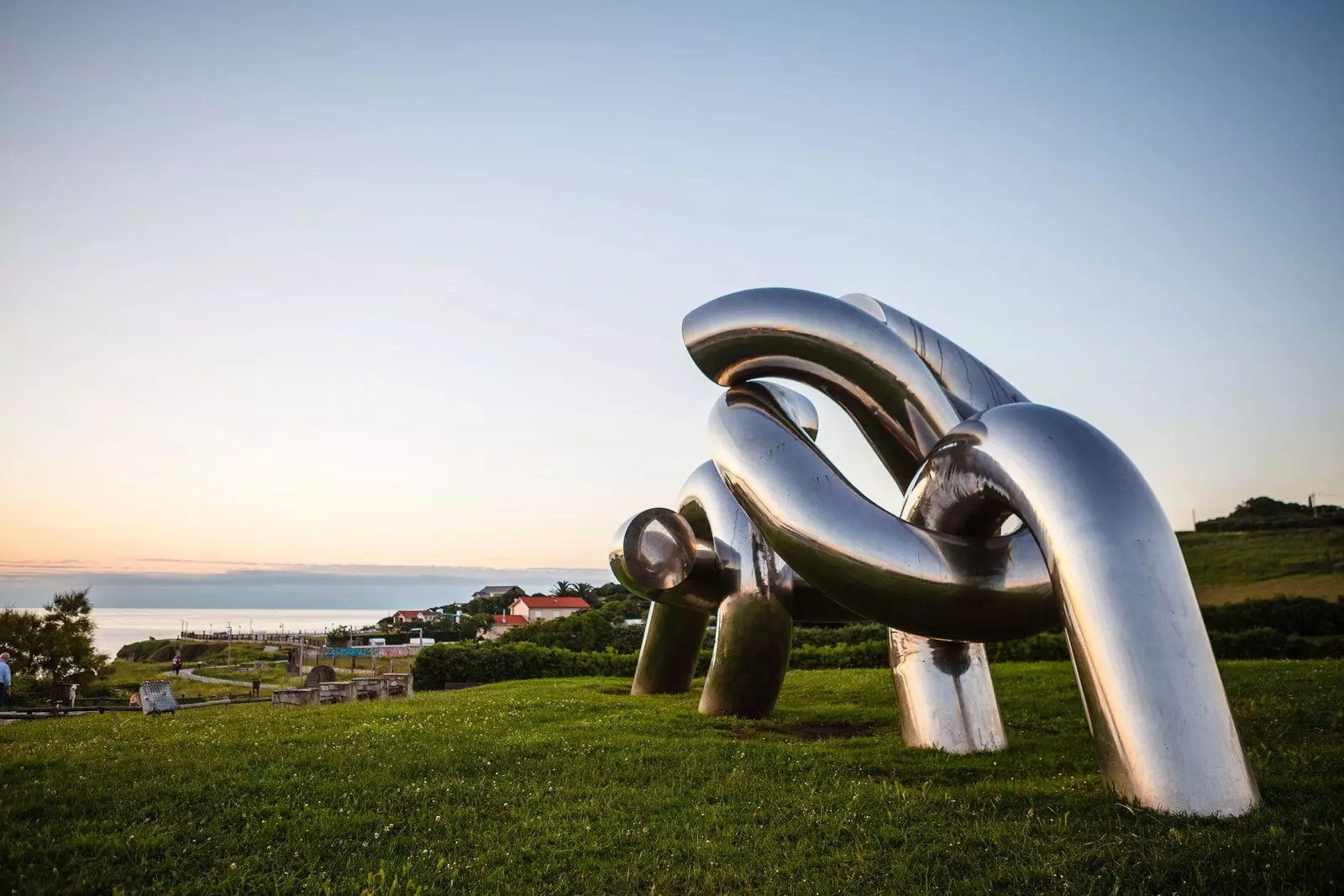
Solidarity, work of Pepe Noja
The end of the road, the La Nora Beach , is also the last stage of another of the paths that should not be missed in Gijón: that of the Ñora River , whose 4.5 kilometers invite you to explore its leafy fluvial landscape. And here, as in almost any corner of Gijón, magic arises: you just have to stop admire the woods that flank part of the path , cross some of its wooden bridges or enjoy its waterfalls, its waterfalls and the sight offered by its old mills, to fall at its feet.
Parallel to the water also runs the Path of the Peñafrance , which serves as a perfect transition between urban and rural. Its nearly 8-kilometre route leads you to walk alongside a golf course, through groups of eucalyptus trees, through meadows, bushes and quintanas and even to leave aside, before reaching the end at the hermitage of Our Lady of Peñafrance, the Carbayera del Tragamón , another of the most beautiful natural monuments in Gijón.
A great option? Take the opportunity to discover this wonderful forest full of ash trees, willows, centennial oaks and chestnut trees that are part of the Atlantic Botanical Garden , an oasis —and a treasure— within the city of Gijón itself and that has one more attraction: a peculiar labyrinth in which to discover the ecosystems of Asturias and the American continent.
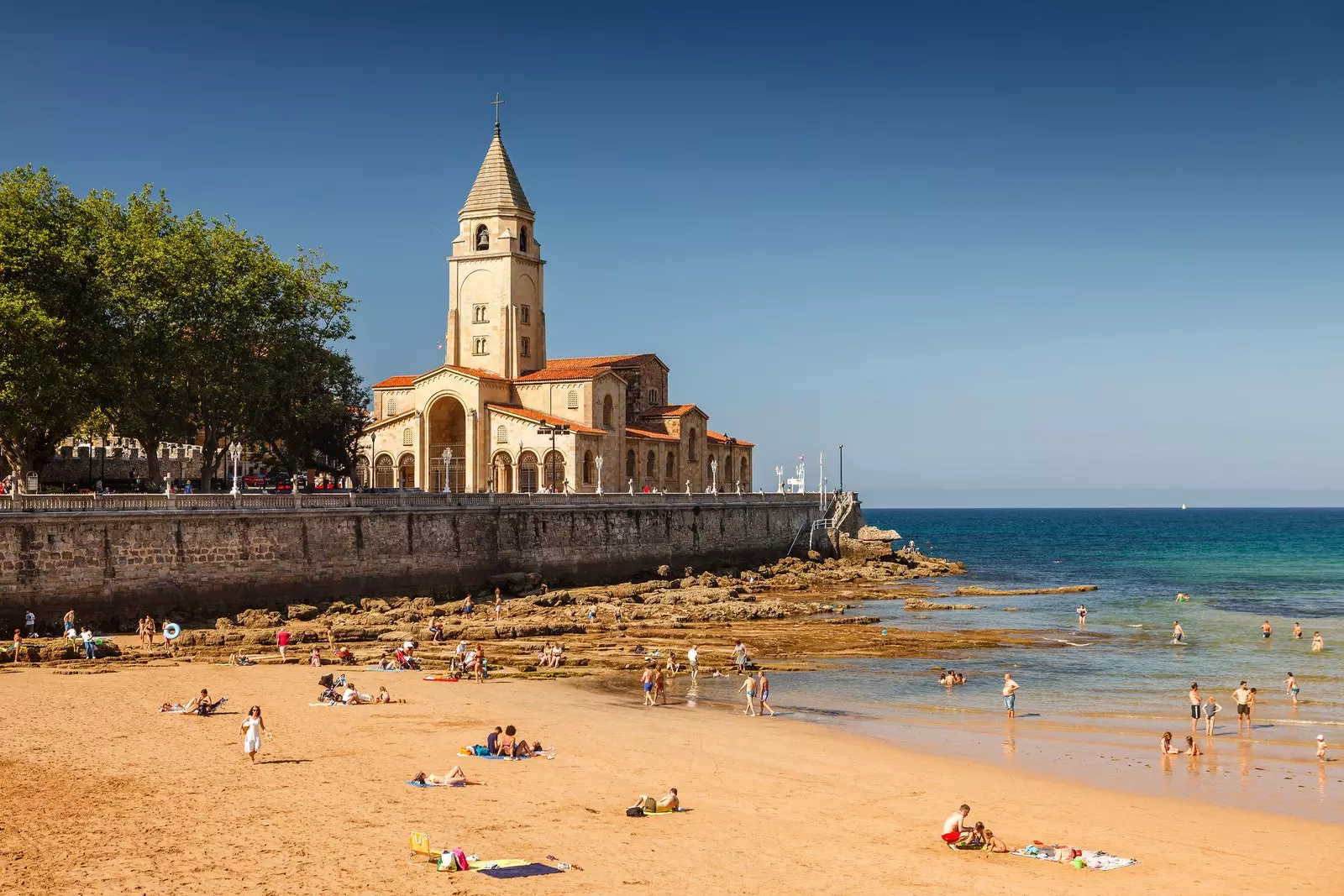
San Lorenzo Beach, Gijon
And in the delight of diving into the natural benefits of the Asturian council, we are encouraged, why not, to discover the Piles River Path , which are actually several: those that run through the old Piles estuary to the parish of Vega and the town of La Camocha . Along the way, mills, sanctuaries and churches dot the landscape here and there, making the experience unique. Of its two variants, if you choose the one that ends at the La Camocha mine, you can always connect with the 7 kilometers that make up the Vía Verde de La Camocha, one of the most special paths in the council.
And why do we say this? Well, because this route invites you to discover that other, more industrial side of Gijón which, after all, is also part of its personality. To do this, a part of the route of the mining railway that linked the wells of La Camocha and Veriña , and one of the best examples of a mining town that survives in the council is visited: that of Santa Bárbara in Tremañes . Pure history of this rich land.
THE MAGIC OF GIJÓN ON FOUR WHEELS
It's time to change the method of transportation, so we get in the car, fasten our seat belts and let ourselves be gently carried along the winding roads that advance through meadows and orchards, the same ones from which the fruits are extracted. which will give rise to great Asturian elixir that is cider . We'll talk about that later though.
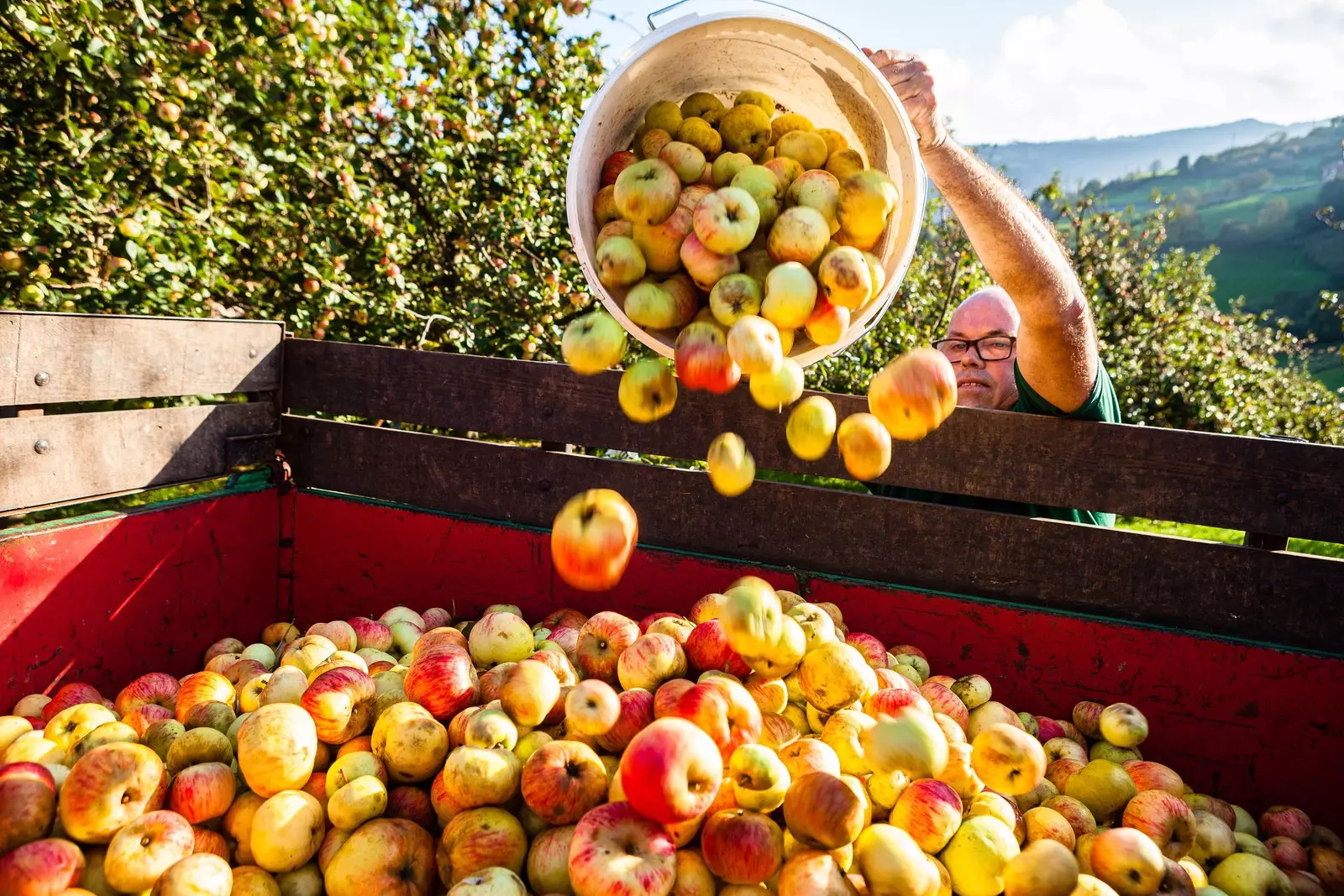
Apple truck, Gijón
Choosing the route that leads to the westernmost parishes of the council allows you to discover treasures far beyond the city. For example, the Church of Santa Maria Magdalena , of Romanesque origin, or the Monte Areo burial mounds . If, on the other hand, we opt for the central and eastern areas, you will always want to take the beautiful route that recovers the memory of the past. And how? Stopping in parishes that preserve beautiful old churches, mansions of the local nobility and hórreos that could be considered authentic monuments. Here it will be time to let your imagination run wild and fantasize about times when its inhabitants traveled on horseback through the green Asturian landscape.
And what surprises await on this route? Well, from your own Laboral City of Culture or the Atlantic Botanical Garden , located on the limits of Gijón itself, to the Palace of the Vigil de Quiñones, that of the Valdés-Sorribas , the most interesting Museum of the artist from Gijón Evaristo Valle or one of the most charming corners of the entire council: the Carbayon of Llavandera , an ancient oak over four hundred years old whose size —20 meters high and 7 meters wide— has led it to be recognized as natural monument . The best thing about this treasure is listening to the legends that exist around it from the mouth of a countryman.
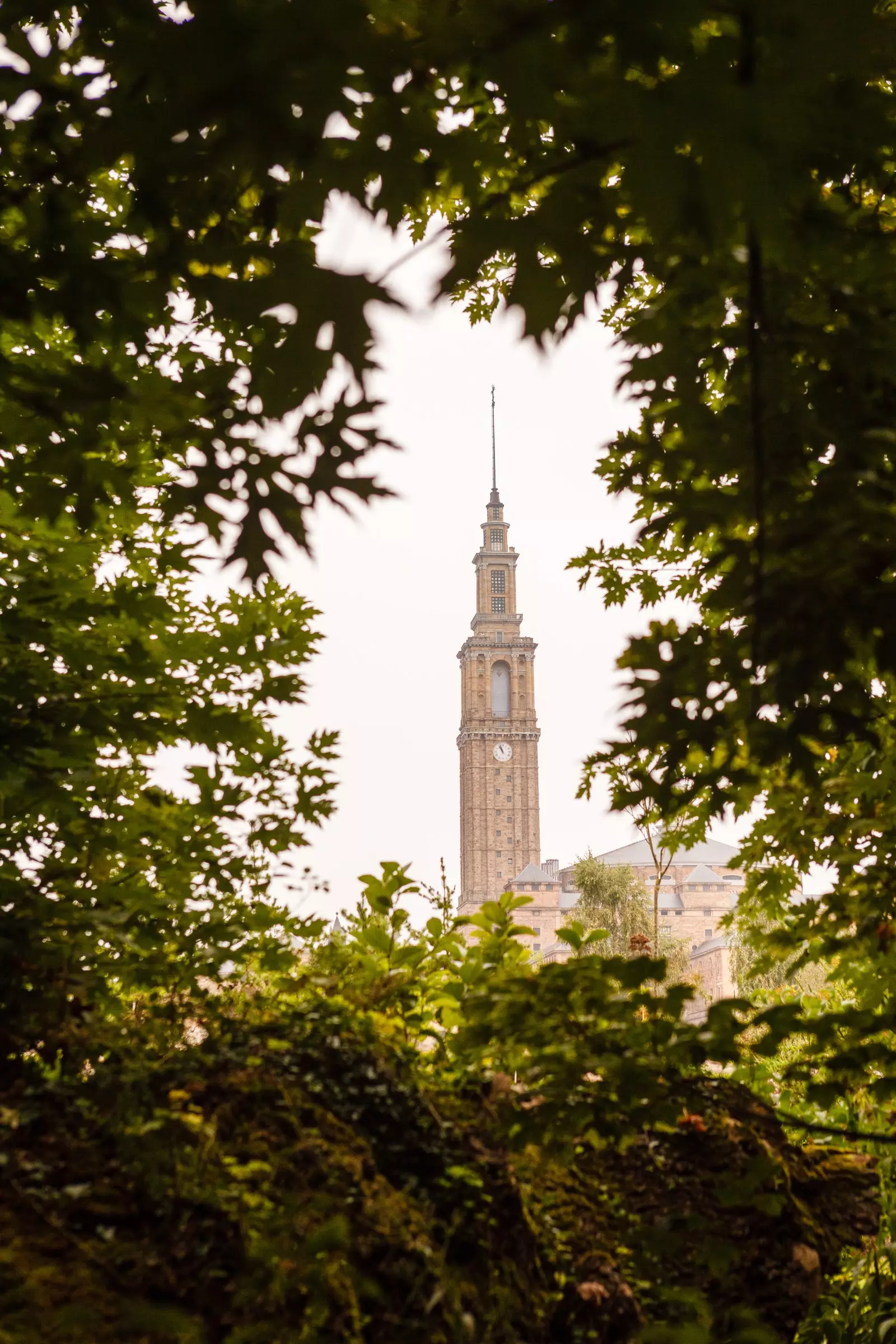
Labor Tower, Gijón
50 kilometers runs through another of the routes to be done by car: The Sea of Green , the route that leads from the best views of the intense blue of the Bay of Biscay —those that can be seen from Playa de San Lorenzo and are maintained along Playa del Rinconín or La Ñora — to the dominant green of the interior landscape in which corners such as the Llavaderu de Deva, the La Camocha Mine or the Church of San Xuan de Fano , all examples of the wonderful heritage of Gijón.
Further to the west, a latest version of Gijón: the one discovered in parishes such as Puao, Fresno, Heels or Serin , where the trip invites to unite past and present while visiting historical vestiges such as the Tumulus stones of Monte Areo , the Romanesque remains of the church of San Miguel de Serín or, in a much more current line, the Aceralia factory , industrial reference of the times in which we live.
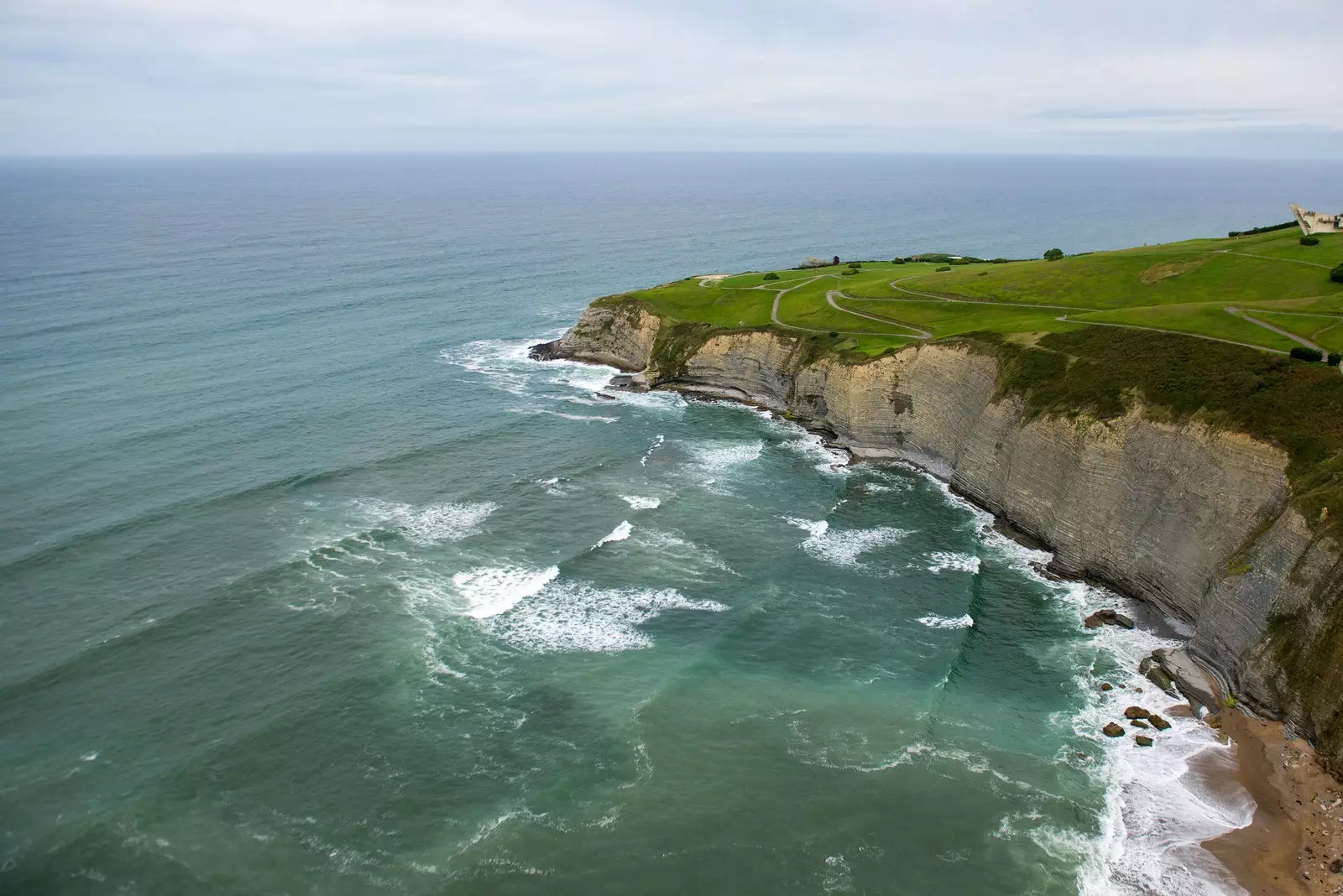
Views of the Ñora Route
DON'T MISS A CULIN OF CIDER
There is no self-respecting trip to Gijón that does not include, before, during or as a farewell, the sweet pleasure of having some ciders. And it turns out that there is no more authentic way to do it than by visiting one of the many cider presses that are distributed by the council.
Because there are for all tastes, with the most varied proposals, but in all of them you will be able to understand the origin, the process and the beauty behind this admired tradition that is sharing. Because cider is not only the product —exquisite, by the way— of a pomade from which this delicious drink is extracted: cider is also everything that involves the ritual of drinking it among friends or family and that gives meaning to an authentic way of life.
There are six wineries that allow visits in Gijón — Trabanco Cider, Piñera Cider, Castañón Cider, Acebal Cider, Menéndez Cider and Llagar de Bernueces —, and they all tend to end in the same way: pouring a few culinos directly from the barrel to toast the beautiful things in life.
A special and unique moment can only be understood if we are in Asturias.
